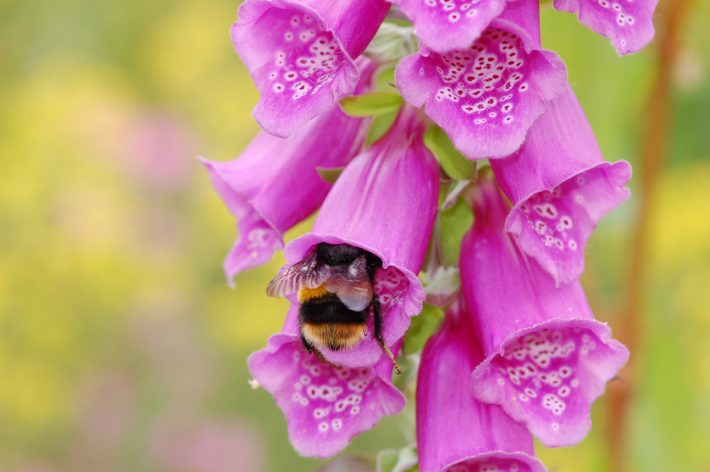‘Virtual safe space’ to help bumblebees
University of Exeter press release
The many threats facing bumblebees can be tested using a “virtual safe space” created by scientists at the University of Exeter.
Bumble-BEEHAVE provides a computer simulation of how colonies will develop and react to multiple factors including pesticides, parasites and habitat loss.

The tool lets researchers, farmers, policymakers and other interested parties test different land management techniques to find out what will be most beneficial for bees. Field experiments can be very timely and costly, so results from Bumble-BEEHAVE can help refine and reduce the number of experiments needed.
Bumble-BEEHAVE – which is freely available online – is a powerful tool that can make predictions, according to a new study published in the Journal of Applied Ecology.
“We know that pollinator decline is a really big problem for crops and also for wildflowers,” said Dr Grace Twiston-Davies, of the Environment and Sustainability Institute at the University of Exeter’s Penryn Campus in Cornwall.
“Bumble-BEEHAVE takes into account the many complicated factors that interact to affect bumblebees.
“This provides a virtual safe space to test the different management options.”
“It’s a free, user-friendly system and we’re already starting to work with land managers and wildlife groups on the ground.”
Disentangling the many factors that affect bumblebee colonies is incredibly complicated, meaning real-word testing of different methods by land managers is often not feasible.
This problem prompted the Exeter scientists to create the BEEHAVE (honeybees) and Bumble-BEEHAVE computer models.
Bumble-BEEHAVE can simulate the growth, behaviour and survival of six UK bumblebee species living in a landscape providing various nectar and pollen sources to forage on.
“The Bumble-BEEHAVE model is a significant step towards predicting bumblebee population dynamics,” said Professor Juliet Osborne, who leads the BEEHAVE team.
“It enables researchers to understand the individual and interacting effects of the multiple stressors affecting bumblebee survival and the feedback mechanisms that may buffer a colony against environmental stress, or indeed lead to spiralling colony collapse.
“The model can be used to aid the design of field experiments, for risk assessments, to inform conservation and farming decisions and for assigning bespoke management recommendations.”
Professor Osborne and team won the BBSRC Social Innovator of the Year 2017 award for creating the BEEHAVE models.
“We really hope that researchers and landowners will use the model and give us feedback so we can improve it further in future” said model developer Dr Matthias Becher.
The new study is entitled: “Bumble-BEEHAVE: a systems model for exploring multifactorial causes of bumblebee decline at individual, colony, population and community level.”
Read the full article (freely available for a limited time):
Becher M, Twiston-Davies G, Penny T, et al. Bumble-BEEHAVE: a systems model for exploring multifactorial causes of bumblebee decline at individual, colony, population and community level. J Appl Ecol. 2018. DOI: 10.1111/1365-2664.13165
Media contact:
Matthias Becher, University of Exeter, Email: M.A.Becher@exeter.ac.uk
Like what we stand for?
Support our mission and help develop the next generation of ecologists by donating to the British Ecological Society.